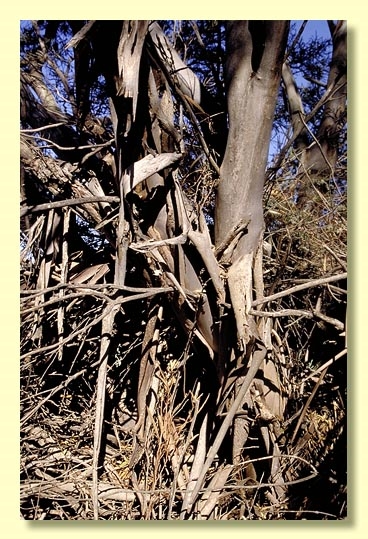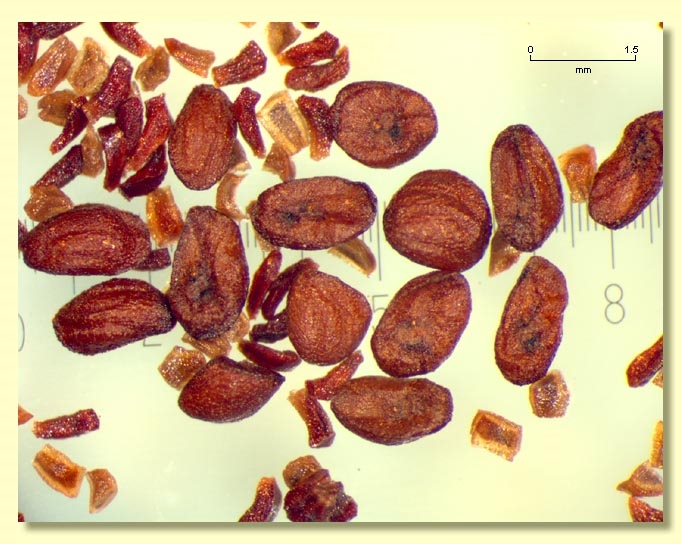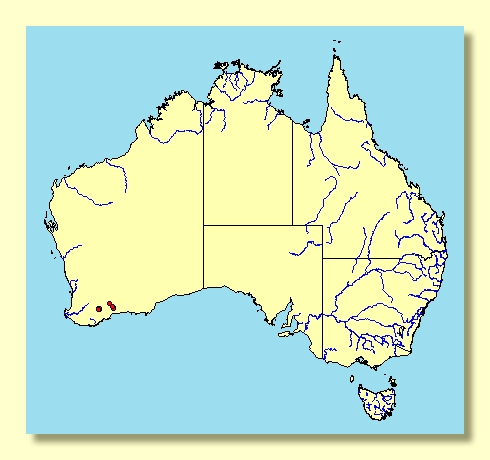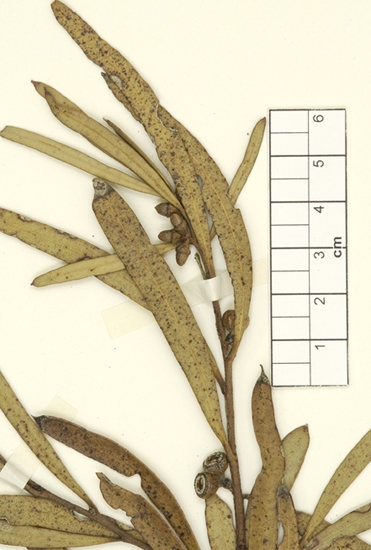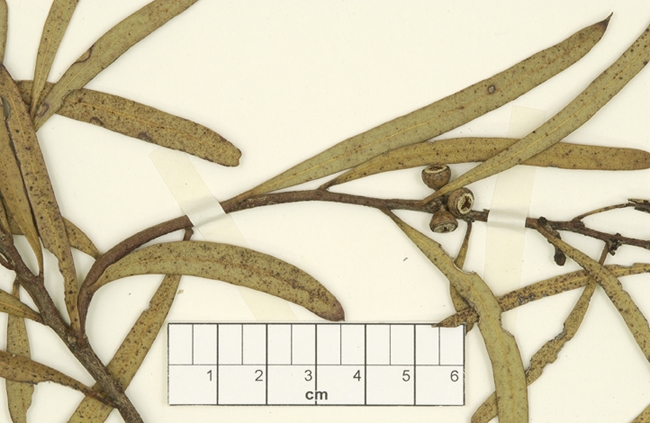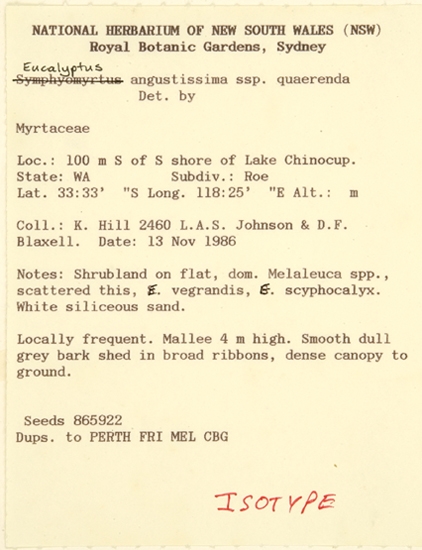Eucalyptus | Symphyomyrtus | Bisectae | Destitutae | Angustissimae | Oviformes
Euclid - Online edition
Eucalyptus quaerenda
Eucalyptus angustissima subsp. quaerenda L.A.S.Johnson & K.D.Hill, Telopea 4: 598 (1992).
T: Western Australia: 100 metres S of south shore of Lake Chinocup, 13 Nov 1986, K.D.Hill 2460, L.A.S.Johnson & D.F.Blaxell; holo: NSW; iso CANB, MEL, PERTH.
Bark smooth throughout, mottled pale grey, pale brown, pinkish-grey and whitish, ribbons sometimes present on lower trunks.
Branchlets lacking oil glands in the pith.
Juvenile growth (coppice or field seedlings to 50 cm): stems rounded in cross-section; juvenile leaves sessile to shortly petiolate, alternate, 4.5–8 cm long, 0.3–0.6 cm wide, lower leaves dull, bluish green, upper leaves green and glossy.
Adult leaves erect, alternate, petioles 0.2–0.5 cm long; blade linear, 5.5–9 cm long, 0.4–0.7 cm wide, base tapering to petiole, margin entire, apex finely pointed and sometimes uncinate, concolorous, dull and bluish green at first soon maturing glossy, green, side-veins greater than 45° to midrib or obscure, reticulation moderate to dense or obscure, oil glands intersectional, ± round.
Inflorescence axillary, single, peduncles 0.1–0.6 cm long, buds 7, pedicellate to sessile (pedicels 0–0.2 cm long). Mature buds ovoid (egg-in-eggcup) with hypanthium widest below the join with operculum, 0.4–0.6 cm long, 0.3–0.4 cm wide, scar present, operculum rounded to conical, stamens inflexed, anthers oblong to reniform, versatile, dorsifixed, dehiscing by short lateral slits, style long, straight, stigma more or less blunt, locules 3, the placentae each with 4 vertical rows of ovules. Flowers creamy white.
Fruit pedicellate or ± sessile (pedicels 0–0.1 cm long), broadly and shallowly cupular to obconical or flattened-globose and often swollen below rim, 0.4–0.5 cm long, 0.5–0.7(0.8) cm wide, disc usually level, sometimes obliquely descending, valves 3, at rim level.
Seeds tan, 1.0–2.5 mm long, flattened-ovoid, dorsal surface ± smooth, at times slightly furrowed, hilum ventral.
Cultivated seedlings (measured at ca node 10): cotyledons Y-shaped (bisected); stem rounded in cross-section, smooth to slightly warty; leaves usually sessile, the lower nodes sometimes crowded, opposite for ca 6 nodes then alternate, linear, thickened and slightly incurved, 4.5–9 cm long, 0.2–0.5 cm wide, green to grey-green, margin may be entire or irregular.
Flowering has been recorded in September.
A mallee endemic to Western Australia. The species occurs in southern subcoastal areas from Lake Chinocup, Lake Altham, Lake King and the upper Phillips River. The bark is smooth and the crown leaves are erect, dull to glossy, green.
Eucalyptus quaerenda differs from E. angustissima in having leaves 0.4–0.7 cm wide (less than or equal to 0.4 cm in the latter species), and from E. misella which has leaves 0.8–1.5 cm wide, whilst E. foliosa has leaves 0.5–1.1 cm wide and differs only slightly.
In the classification of Brooker (2000) Eucalyptus quaerenda belongs in Eucalyptus subgenus Symphyomyrtus section Bisectae subsection Destitutae because buds have two opercula, cotyledons are Y-shaped and branchlets lack oil glands in the pith. Within this subsection E. quaerenda is closely related to only three other species, viz. E. angustissima, E. foliosa and E. misella, together forming series Angustissimae, characterised by the erect leaves, egg-in-eggcup buds and stamens with more or less reniform anthers. The habitat of E. quaerenda and E. angustissima is similar to that of E. foliosa being white sands in the vicinity of salt lakes, whilst E. misella occurs away from salt lakes in heath vegetation on sand with gravel high in the profile.


